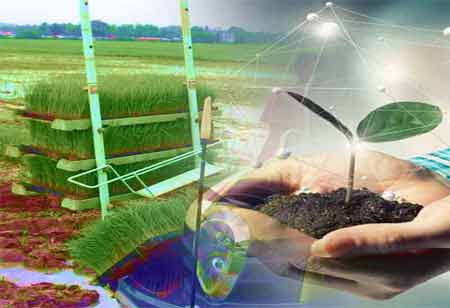Thank you for Subscribing to Agri Business Review Weekly Brief
How to Use Data Analytics in Agriculture?
The agriculture industry is facing a huge challenge right now. Having to feed more people with fewer resources will be tough for agribusinesses as the population grows.

By
Agri Business Review | Wednesday, February 28, 2024
Stay ahead of the industry with exclusive feature stories on the top companies, expert insights and the latest news delivered straight to your inbox. Subscribe today.
70-100% by 2050. Despite environmental issues and limited resources, data analytics using IoT devices can improve crop yields.
Fremont, CA: The agriculture industry is facing a huge challenge right now. Having to feed more people with fewer resources will be tough for agribusinesses as the population grows.
By 2050, the USDA says food demand will rise 70-100%. Despite this, environmental issues and limited resources make it hard to grow farms. Farms can't expand the way they have for much of their history due to improved yields. Data analytics is the answer.
What Tools Do Farmers Need for Data Analytics?
Farmers are utilizing data analytics in agriculture, utilizing IoT devices like soil sensors and drones. They plan to install 12 million sensors and use cloud storage solutions for data organization. Machine learning algorithms will analyze the data for actionable insights, with off-the-shelf solutions also available.
How Can Data Analytics Improve Crop Yields?
Having the right technologies is crucial for farms to enhance crop yields through five strategies once they have the necessary devices and software.
1. Finding the Best Crops to Grow
Data analytics enhances crop yields by identifying suitable crops for each season. Machine learning can analyze extensive data sets faster than humans, identifying connections. Factors like weather patterns and soil quality are evaluated to determine productive crops. Farmers use soil data, temperature readings, drone footage, and satellite imagery to predict conditions.
2. Managing Resource Consumption
Data analytics is crucial for managing agricultural resources like water, fertilizer, and pesticides, ensuring crop production and minimizing overuse. Machine learning and IoT soil sensors enable precision agriculture, adjusting irrigation and fertilizer systems for sustainability, especially for large farms and small animals.
3. Monitoring Plant Health
Data analytics aids farms in monitoring crop health, detecting potential diseases early, minimizing damage, and ensuring long-term health. Soil sensor data monitors plant nutrient consumption, while machine vision systems analyze crop footage to detect infections with 95% accuracy, preserving high yields.
4. Optimizing Planting and Harvesting
Agricultural experience aids in accurate crop planting and harvesting schedules, but climate changes can alter farm conditions. Data analytics can help agribusinesses respond by comparing historical weather trends and soil factors.
5. Protecting Crops in Transit
The use of data analytics and IoT systems can optimize the supply chain in agriculture, reducing food loss and optimizing transport after harvesting. This helps drivers avoid congested areas and inefficient routes, reducing transit time and preventing spoilage.
See Also : Data Analytics Solutions Companies





